Crossing the Nile
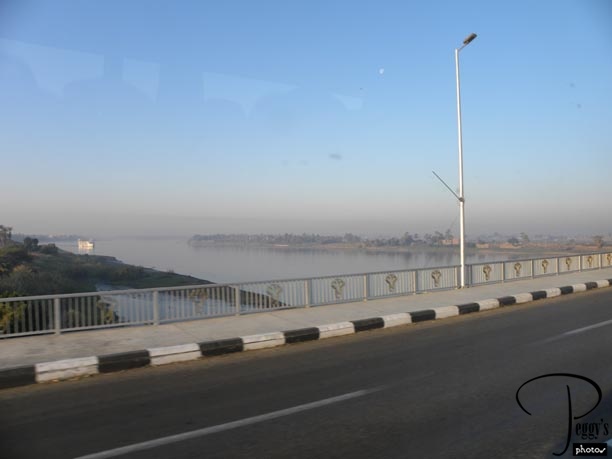
We left our boat about 7 a.m. to head to the Necropolis of Thebes. If we were the sixth boat from the pier, then the boat that docked on us last night was the seventh. We saw people from that boat cross our lobby on their way, eventually, to the pier. One interesting thing we saw when moving from boat to boat was two very classy lobbies––you can sail down the Nile in luxury.

Crossing the Nile
On the Way to the Necropolis of Thebes
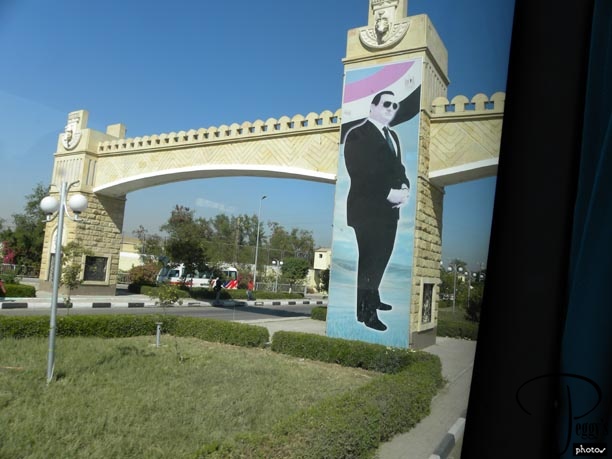
We were now on what was called the Murabak Highway or something similar to that. Striking picture but I bet it is no longer there.

On the Way to the Necropolis of Thebes
On the Way to the Necropolis of Thebes
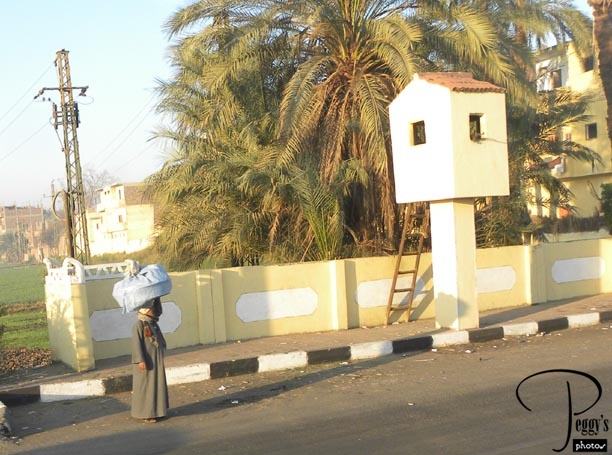
Watchtower on the highway. That is a machine gun pointed at us through the opening.

On the Way to the Necropolis of Thebes
On the Way to the Necropolis of Thebes
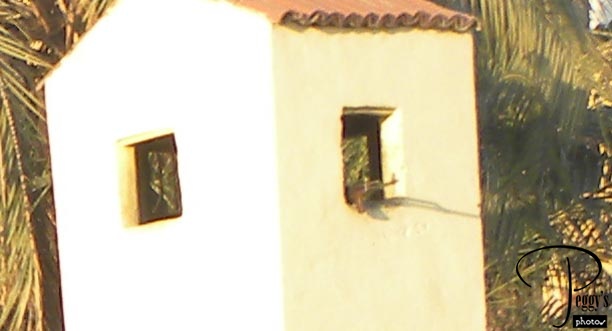
Close–up.

On the Way to the Necropolis of Thebes
Map of the Necropolis of Thebes
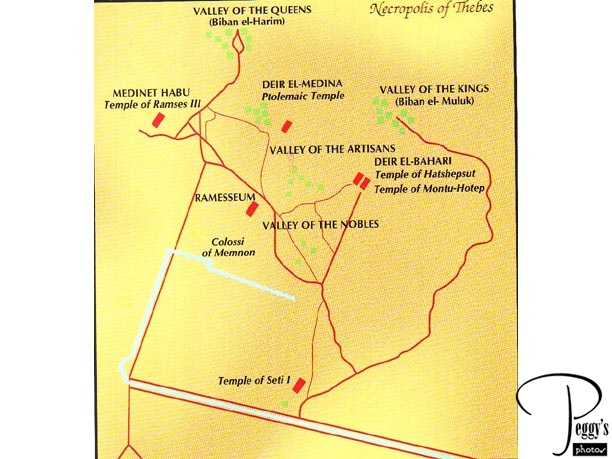
We didn’t visit all the places on this map of the Necropolis of Thebes, but did visit the Valley of the Queens, the Valley of the Kings, the Temple of Queen Hatshepsut, and the Colossi of Memnon. The pharaohs of the New Kingdom from Tuthmosis I (c. 1500 BC) onward were buried in tombs dug deeply in the Thebian hills in the hope that it would keep grave robbers from stealing the treasures buried with them that they would need in the afterlife. However, all of the tombs were successfully raided of their treasures except for the tombs of Yuya, Tuya, and Tutankhamum (King Tut). But the robbers only took the treasures and did not cause damage to the structures themselves or did they deface the artwork on the walls and ceilings.
The tombs were begun as soon as a pharaoh’s rule began, but they were not finished until after the pharaoh’s death. The pharaohs’ wives and children and also nobles and other VIPs also had their tombs in the necropolis.

Map of the Necropolis of Thebes
Valley of the Queens
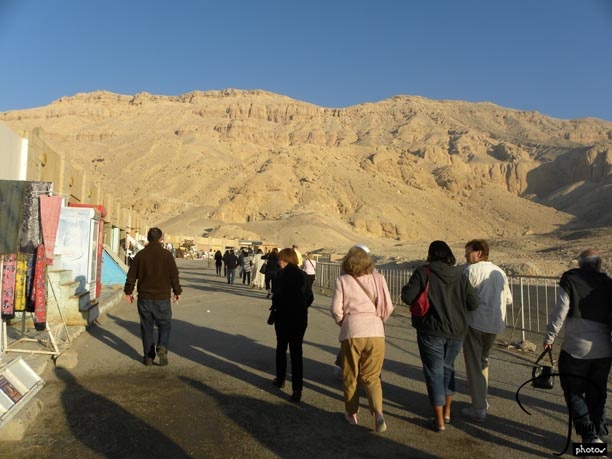
We are at the Valley of the Queens––vendors on the left. Many of us bought a Valley of the Kings/Valley of the Queens booklet here because no photos were allowed in the tombs.

Valley of the Queens
Valley of the Queens
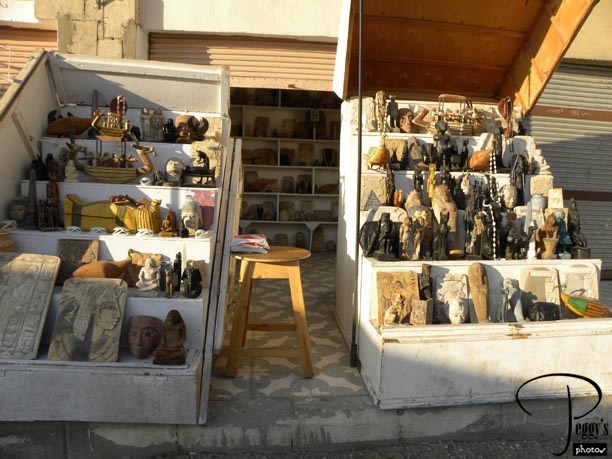
For sale here.

Valley of the Queens
Valley of the Queens
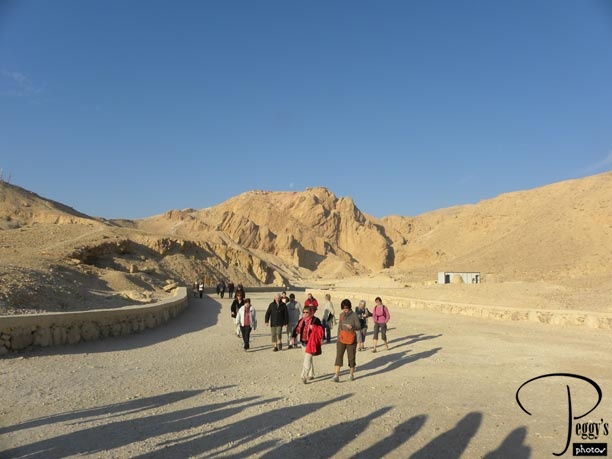
We arrived here about 7:30 a.m. This group was already leaving. Sightseeing starts very early in Egypt.

Valley of the Queens
Valley of the Queens
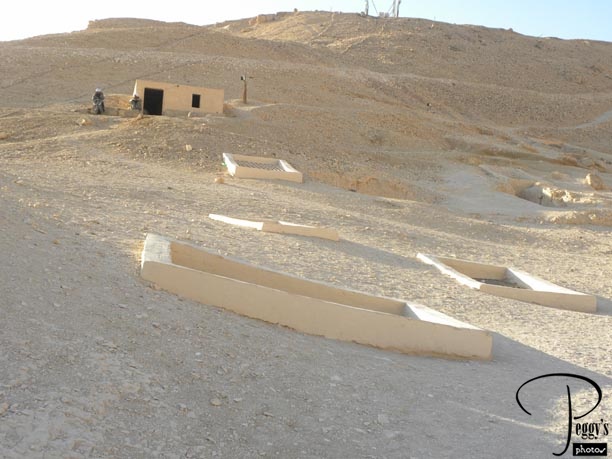
The Valley of the Queens contains the tombs of many royal wives and children, starting from the reign of Ramses I. There are almost 80 tombs here. Each concrete enclosure marks a tomb.

Valley of the Queens
Valley of the Queens
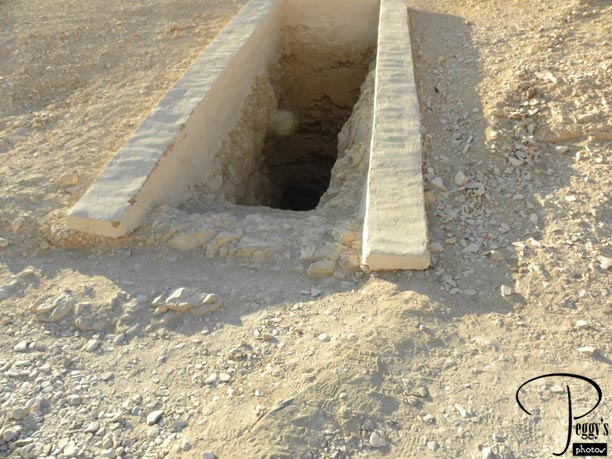
Close–up of the entrance to a tomb.

Valley of the Queens
Valley of the Queens
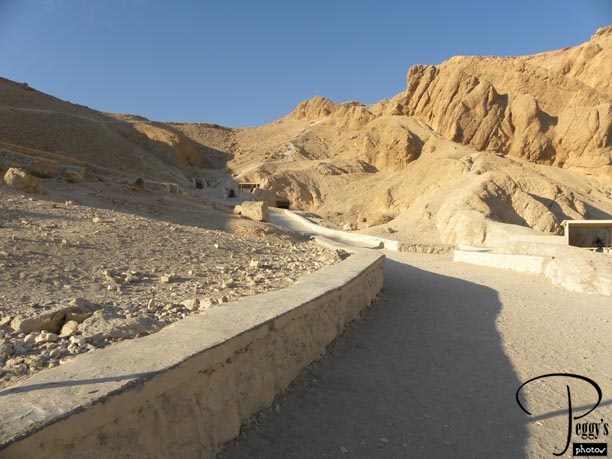
Onward up the hill.

Valley of the Queens
Valley of the Queens
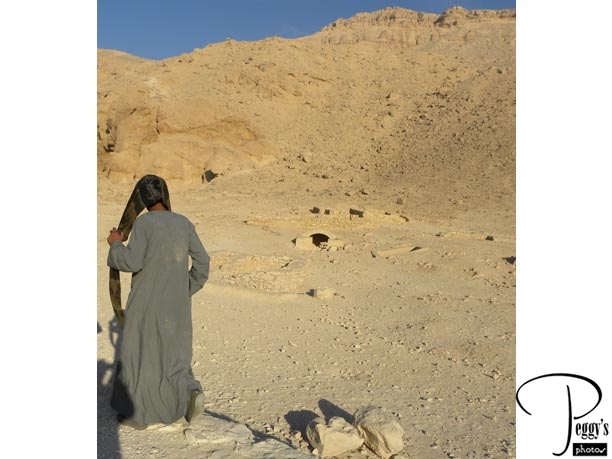
Some local color.

Valley of the Queens
Valley of the Queens
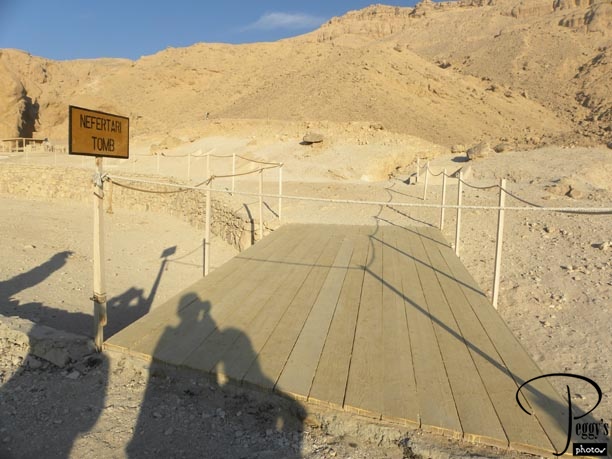
The most famous tomb here is that of Queen Nefertari. You need special permission to visit her tomb.

Valley of the Queens
Valley of the Queens
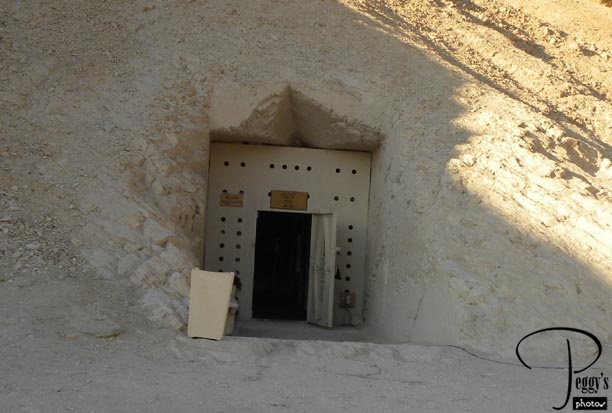
The tomb of Queen Titi. We did not visit her tomb. Not all tombs are open at the same time, so you may not know which tombs will be open on the day you are here.

Valley of the Queens
Valley of the Queens
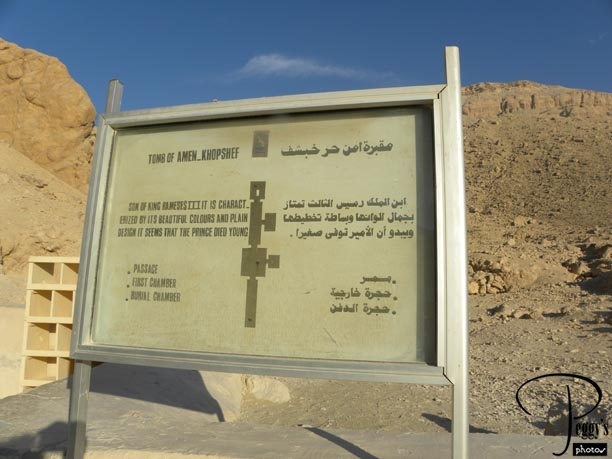
The tomb of Amunherkhepshep (Amun), son of Ramses III. He died when he was a child.

Valley of the Queens
Valley of the Queens
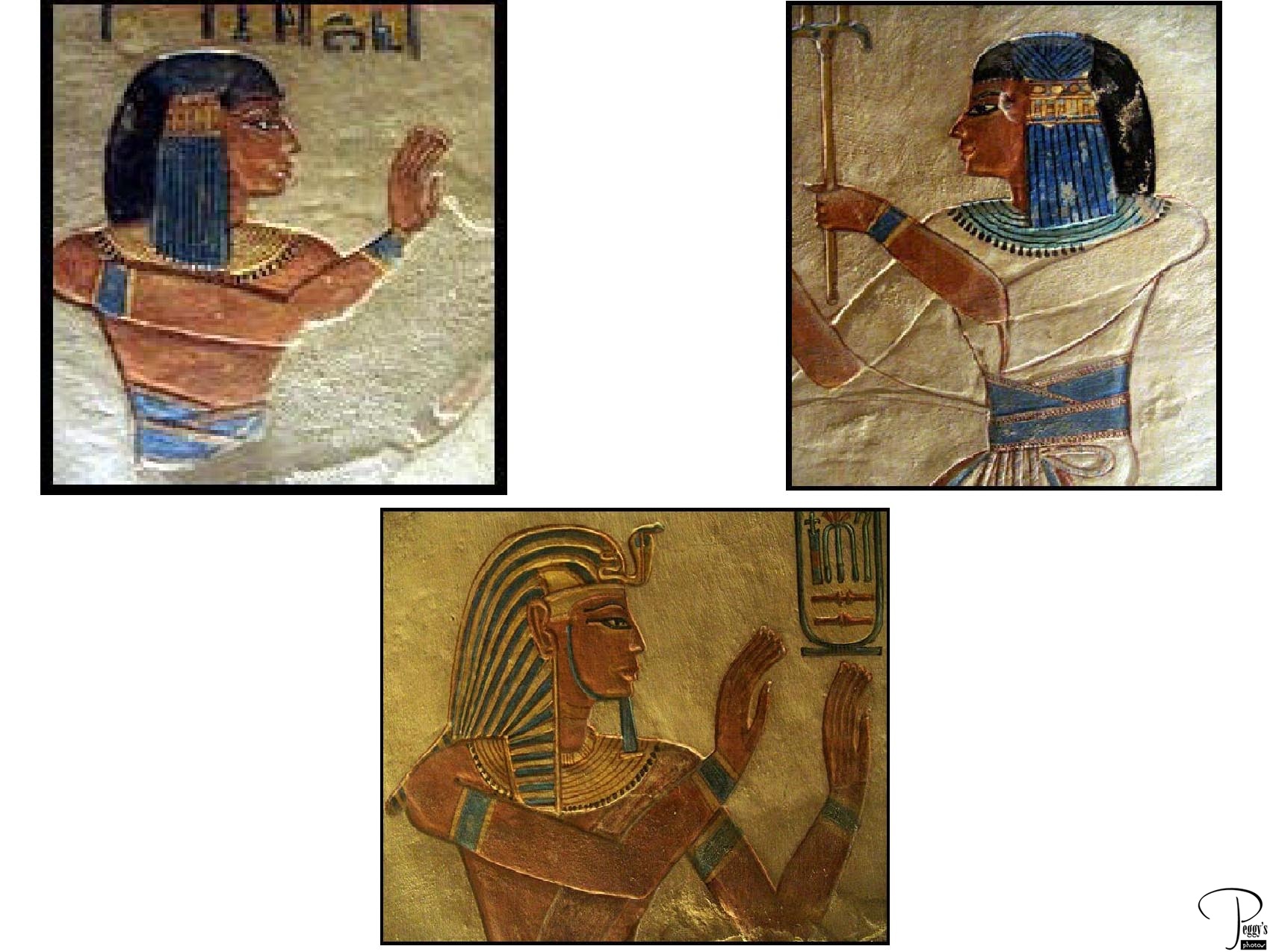
No photos were allowed in the tomb, but I found some noncopywrited ones on the Internet to use. The paintings on the tomb’s walls and ceiling were exquisite, more so because we had previously only been seeing the outlines of hieroglyphics and figures in the temples––these were painted, in their original paints. Many of the colors were still vibrant, especially the blues. I can easily say that visiting the tombs in both the Valleys of the Kings and Queens is one of the top sites for any traveler to visit.
The paintings in Amun’s tomb are of Ramses III taking his son on a visit to the underworld to pay homage to its gods. Amun is pictured wearing a prince’s braided hairstyle. He is pictured in the top two photos. The bottom photo is of Ramses III.

Valley of the Queens
Valley of the Queens
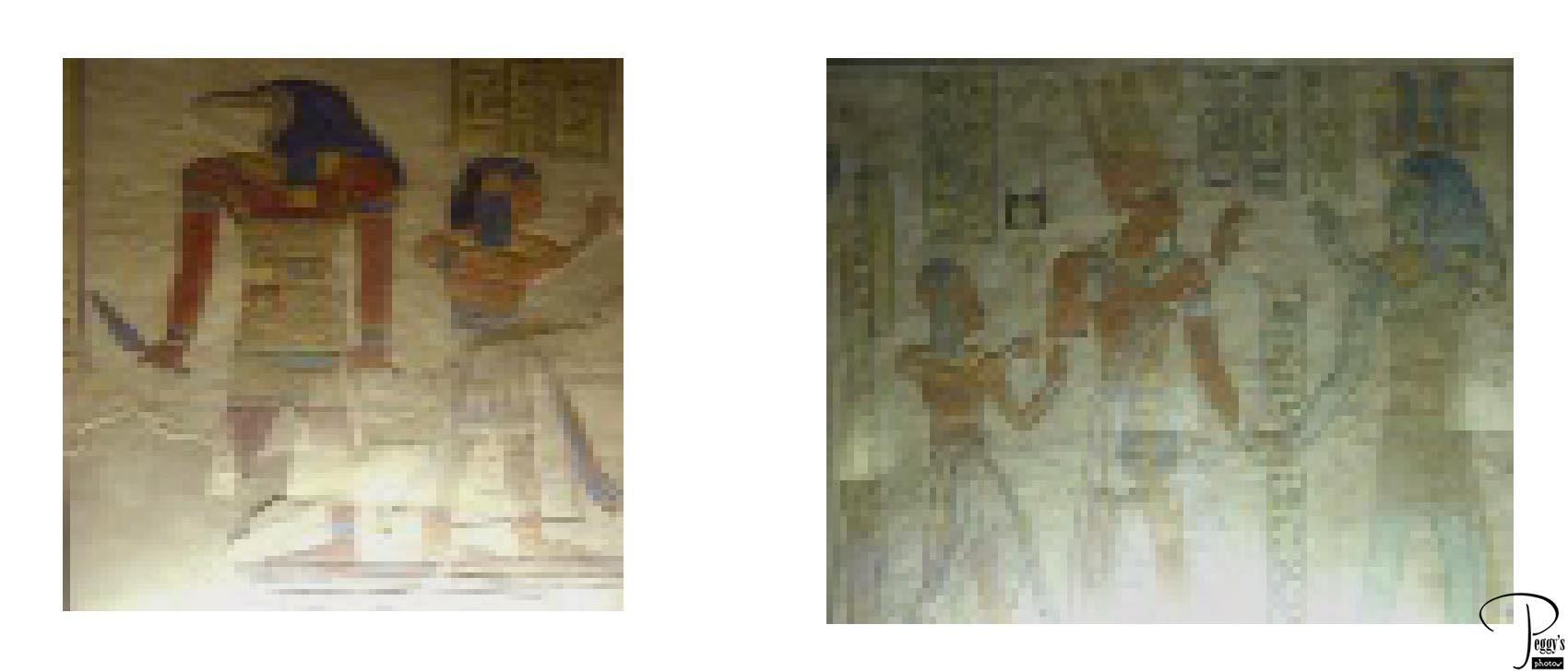
More photos of the Tomb of Amunherkhepshep.

Valley of the Queens
On the Way to the Valley of the Kings
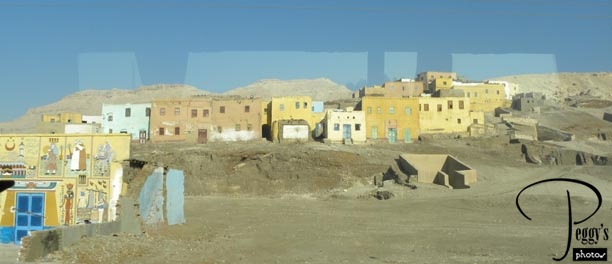
Excavations are still going on. If it is believed that a tomb may be under one of these buildings, the building is razed.

On the Way to the Valley of the Kings
On the Way to the Valley of the Kings
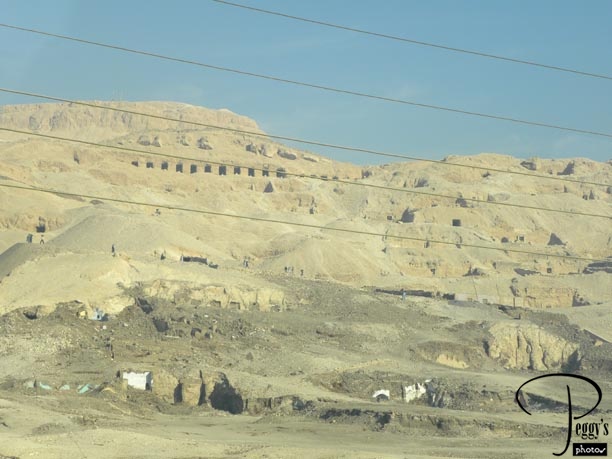
More tombs in the hills.

On the Way to the Valley of the Kings
On the Way to the Valley of the Kings
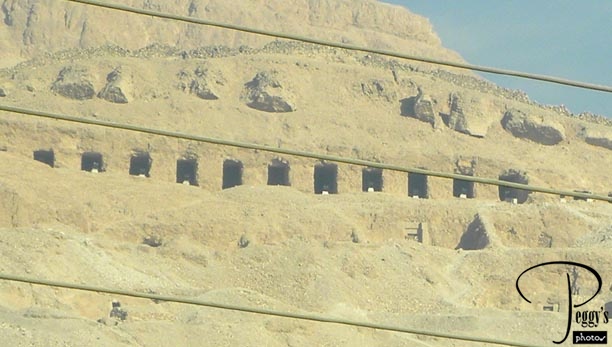
Close–up.

On the Way to the Valley of the Kings
On the Way to the Valley of the Kings
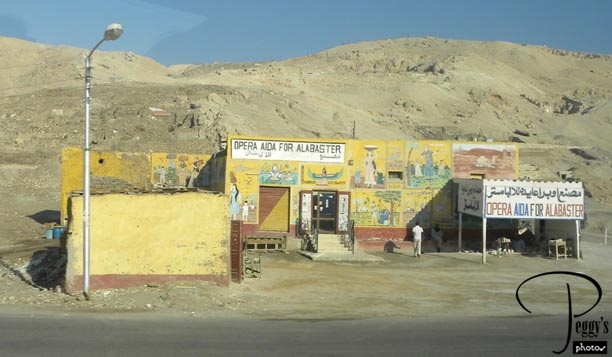
Many stores are selling alabaster in this area.

On the Way to the Valley of the Kings
On the Way to the Valley of the Kings
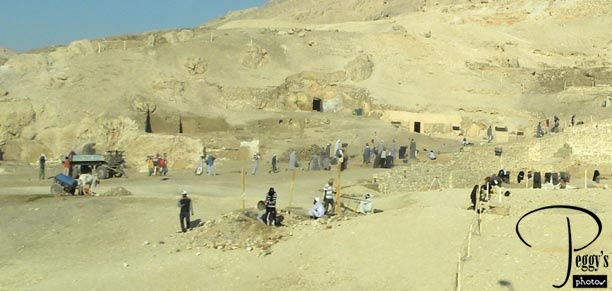
Excavation workers.

On the Way to the Valley of the Kings
On the Way to the Valley of the Kings
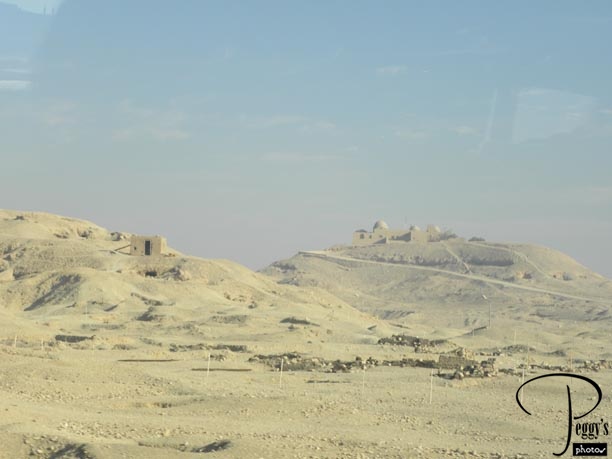
A mosque high up on a hill.

On the Way to the Valley of the Kings
On the Way to the Valley of the Kings
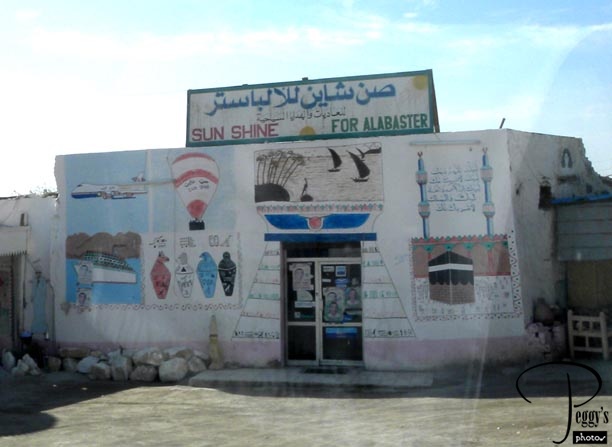
Another colorful alabaster store.

On the Way to the Valley of the Kings
Map of the Valley of the Kings
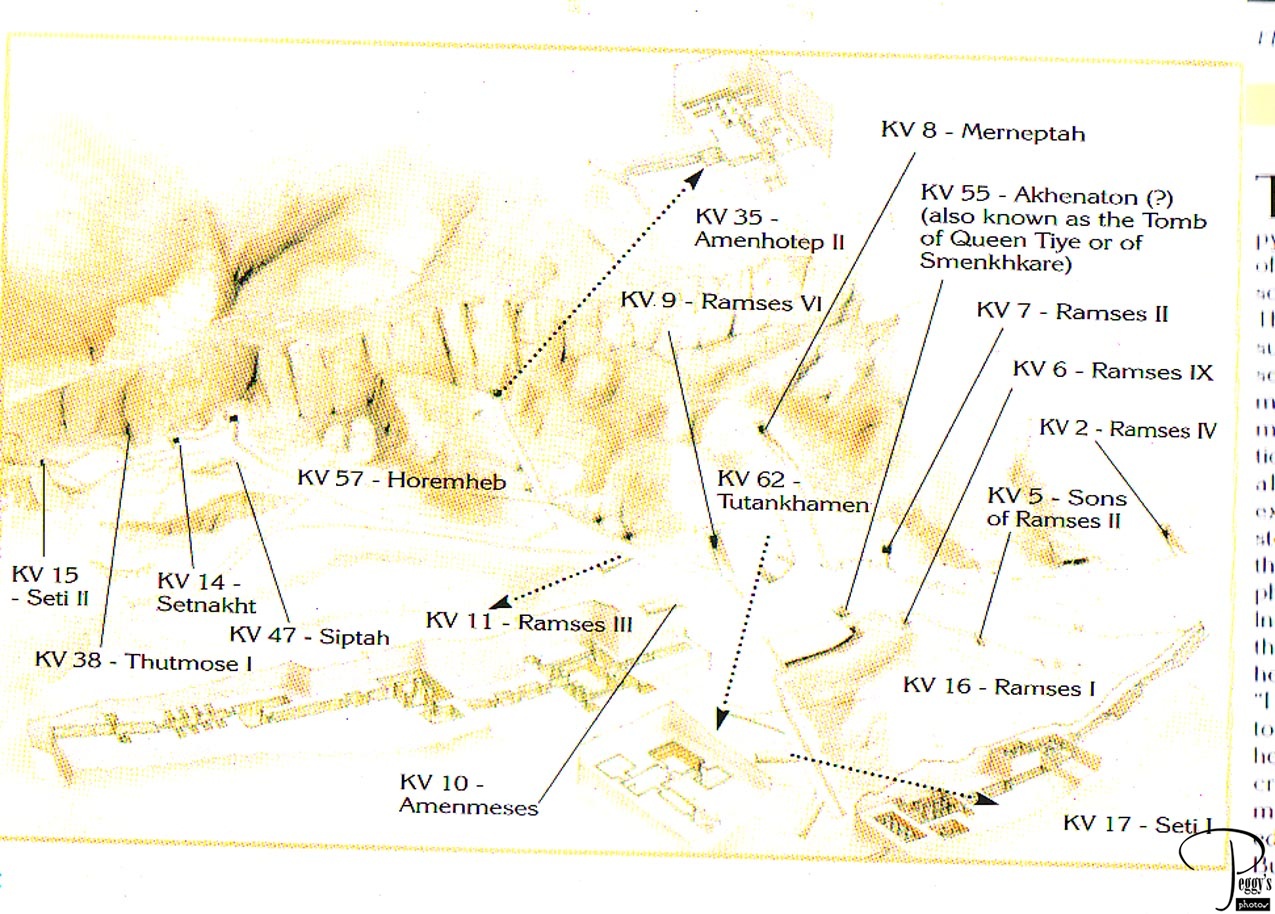
We have arrived at the Valley of the Kings. No photos allowed. We took a tram from the parking lot to the tombs. All the tombs are numbered: 1–65. I believe that we visited the tombs of Seti I and Ramses VI. Again, only a few tombs are open at any one time.

Map of the Valley of the Kings
The Tomb of Seti I–Valley of the Kings
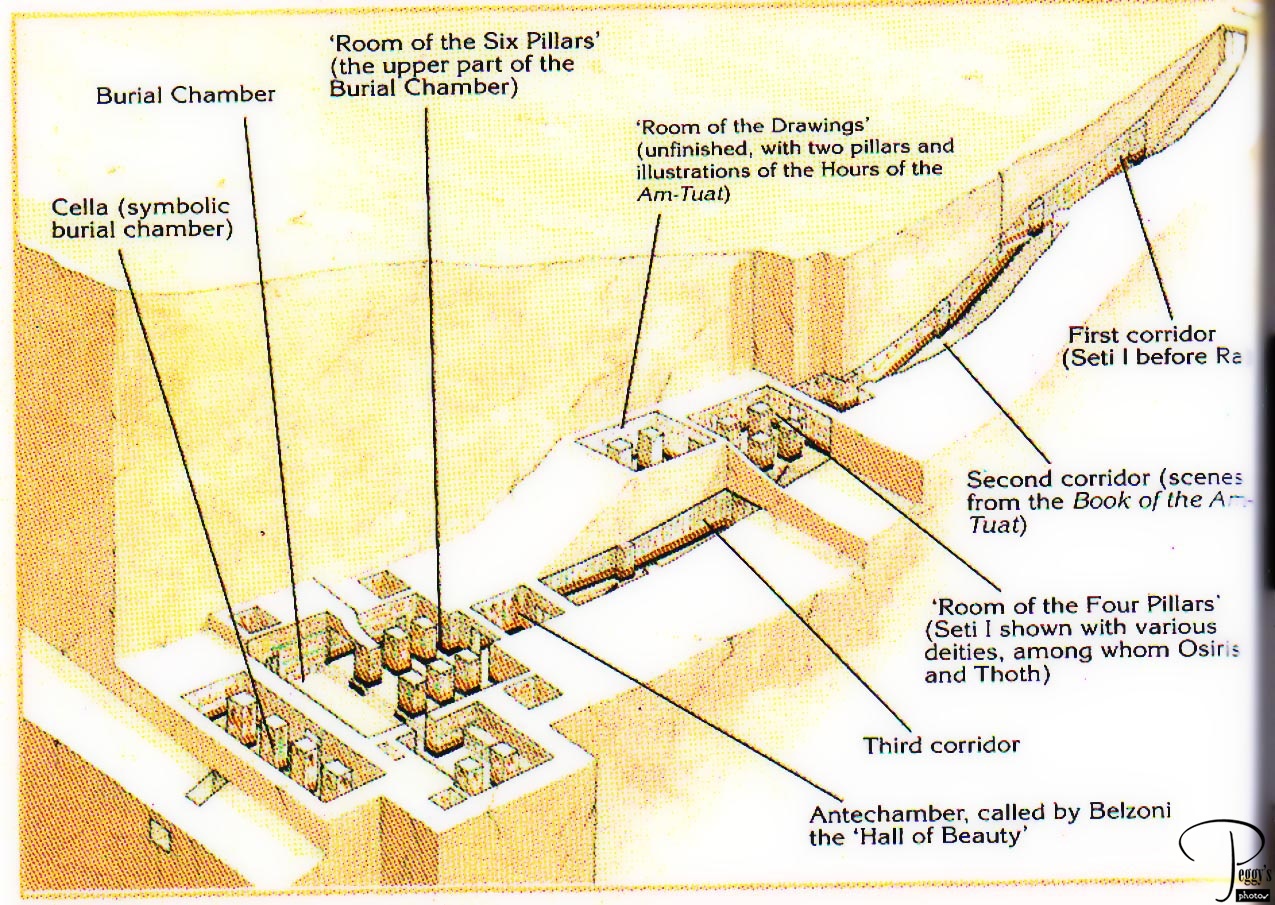
The layout of the Tomb of Seti I (1294–1279 BC). This is the longest tomb––the passageway, mostly downhill, is 100 feet. To reach its bottom, there are some steps with rails and long steep ramps with wood stops on them. It’s a long walk both up and down but with beautiful paintings on both sides and on the ceilings. It was also very crowded, not giving you much opportunity to stop along the way to spend more time viewing the paintings.

The Tomb of Seti I–Valley of the Kings
The Tomb of Seti I–Valley of the Kings
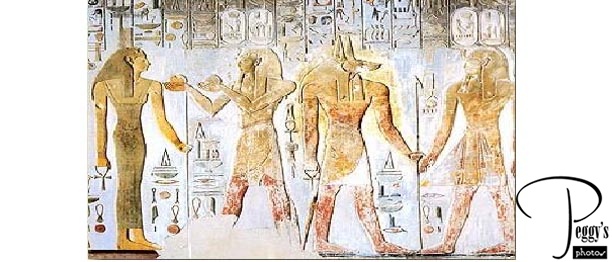
Inside the Tomb of Seti I. Again, I was able to find these noncopyrighted photos on the Internet.

The Tomb of Seti I–Valley of the Kings
The Tomb of Seti I–Valley of the Kings
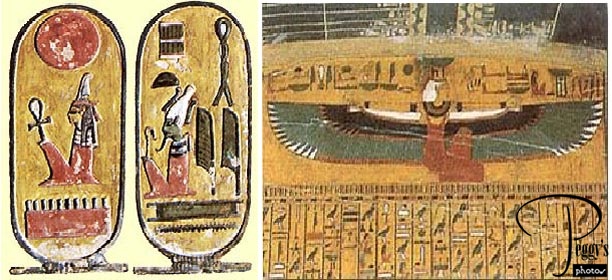
Inside the Tomb of Seti I.

The Tomb of Seti I–Valley of the Kings
The Tomb of Seti I–Valley of the Kings
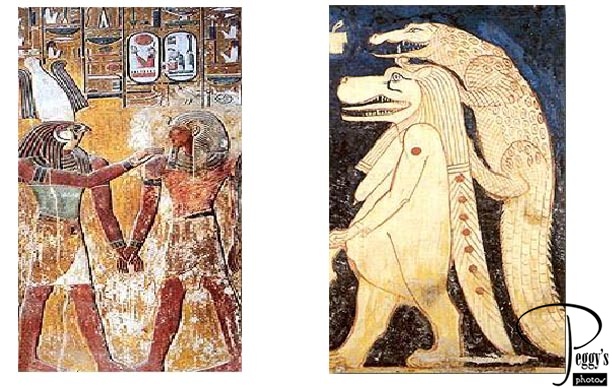
Inside the Tomb of Seti I.

The Tomb of Seti I–Valley of the Kings
The Tomb of Seti I–Valley of the Kings
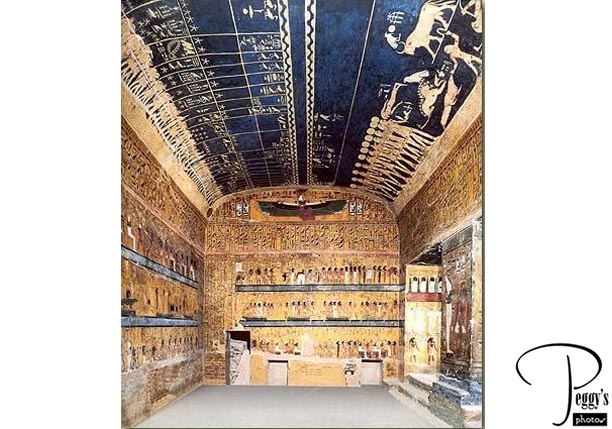
Inside the Tomb of Seti I.

The Tomb of Seti I–Valley of the Kings
The Tomb of Ramses VI–Valley of the Kings
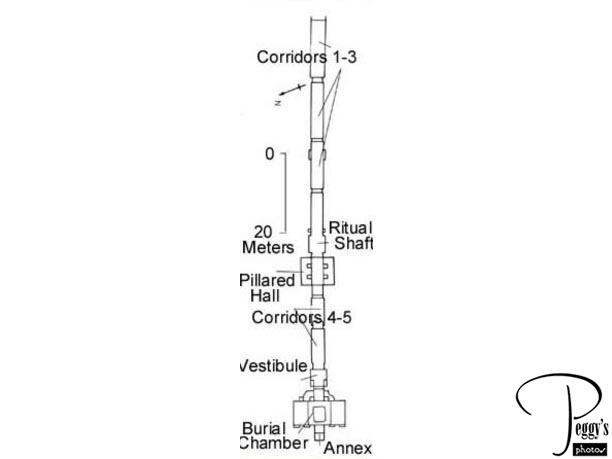
The second tomb I believe that we visited: the Tomb of Ramses VI. This photo shows the structure of the tomb––much shorter than the Tomb of Seti I and easier to walk through.

The Tomb of Ramses VI–Valley of the Kings
The Tomb of Ramses VI–Valley of the Kings

Inside the tomb of Ramses VI––noncopyrighted photos taken from the Internet.

The Tomb of Ramses VI–Valley of the Kings
The Tomb of Ramses VI–Valley of the Kings

Inside the Tomb of Ramses VI.

The Tomb of Ramses VI–Valley of the Kings
The Tomb of Ramses VI–Valley of the Kings
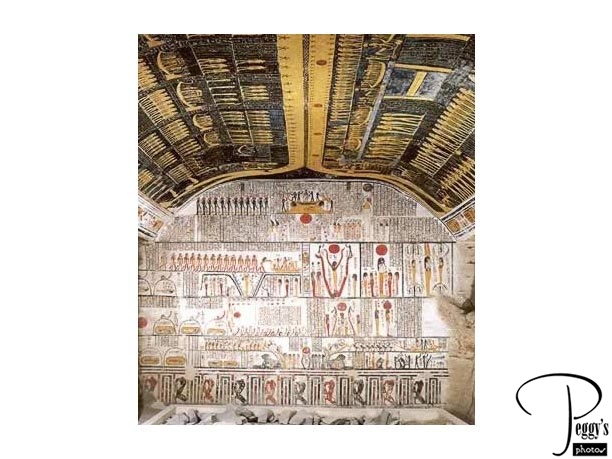
Inside the Tomb of Ramses VI.

The Tomb of Ramses VI–Valley of the Kings
Temple of Queen Hatshepsut
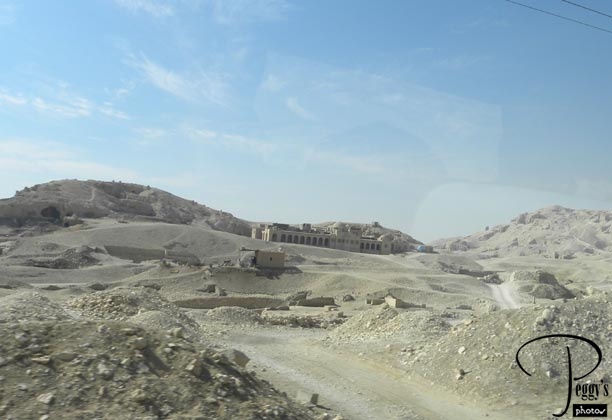
Our next stop was at the Mortuary Temple of Queen Hatshepsut. Queen Hatshepsut is believed to have ruled from 1503 to 1432 BC and also is believed to be the first female pharaoh. Her co–regent was her stepson, Tuthmosis III.

Temple of Queen Hatshepsut
Temple of Queen Hatshepsut
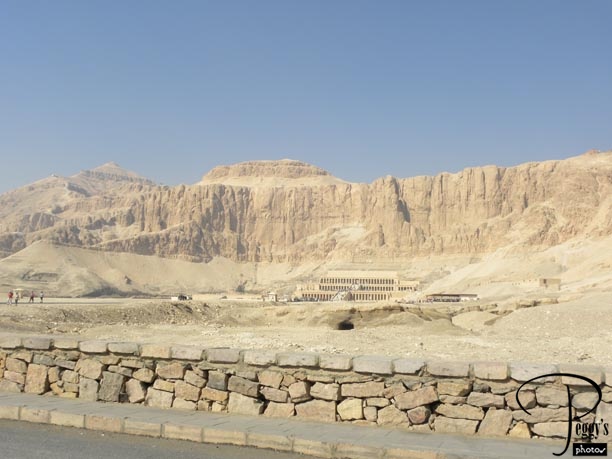
We took a tram from the parking lot to the temple. I think I easily counted 50 tour buses here.

Temple of Queen Hatshepsut
Temple of Queen Hatshepsut
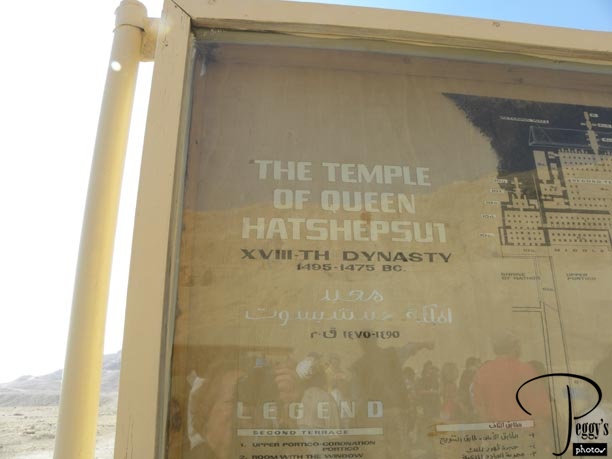
I caught our tour group in the glass.

Temple of Queen Hatshepsut
Temple of Queen Hatshepsut
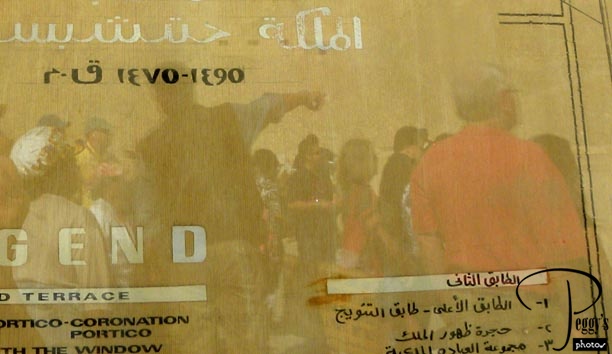
Our tour group. It is easy to pick out very tall Amro.

Temple of Queen Hatshepsut
Temple of Queen Hatshepsut
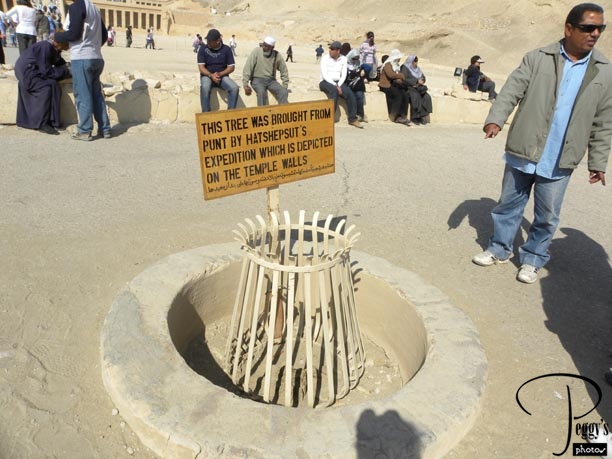
One of two remaining trees brought here by Hatshepsut. This would mean that the trees date back to the 1400’s BC.

Temple of Queen Hatshepsut
Temple of Queen Hatshepsut
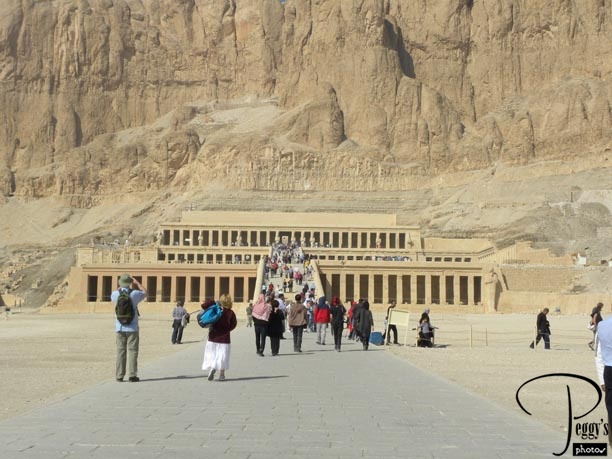
The Temple of Queen Hatshepsut was built in the 18th Dynasty (1550–1295 BC). It surprisingly looks much like a modern building. It was damaged by later pharaohs and later became a Christian monastery.

Temple of Queen Hatshepsut
Temple of Queen Hatshepsut
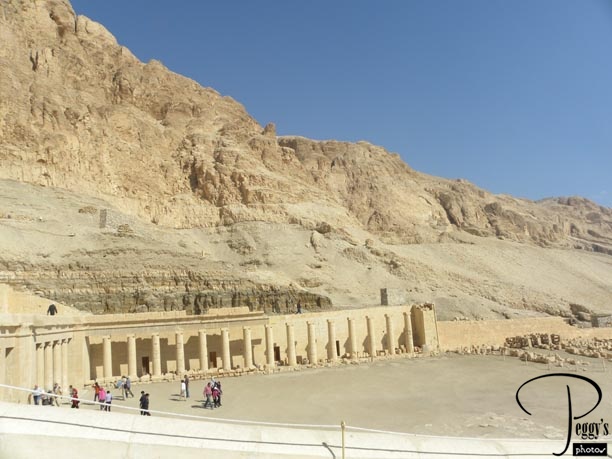
The Birth Colonnade.

Temple of Queen Hatshepsut
Temple of Queen Hatshepsut
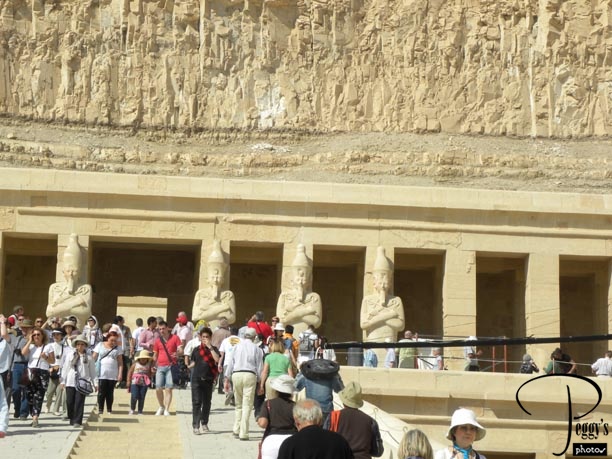
Part of a row of Queen Hatshepsut statues on the upper terrace, where she is represented as a male king.

Temple of Queen Hatshepsut
Temple of Queen Hatshepsut
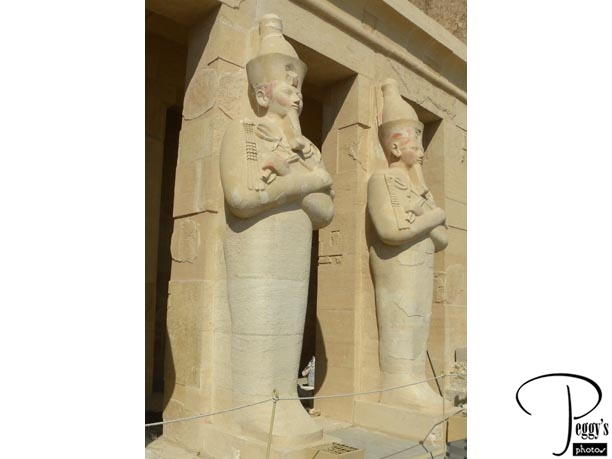
Close–up.

Temple of Queen Hatshepsut
Temple of Queen Hatshepsut
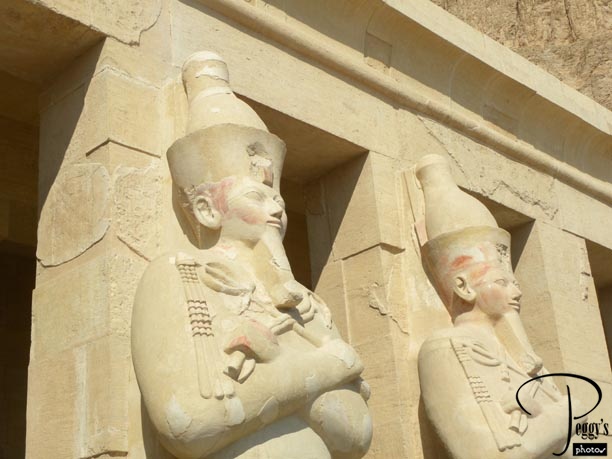
And closer–up.

Temple of Queen Hatshepsut
Temple of Queen Hatshepsut
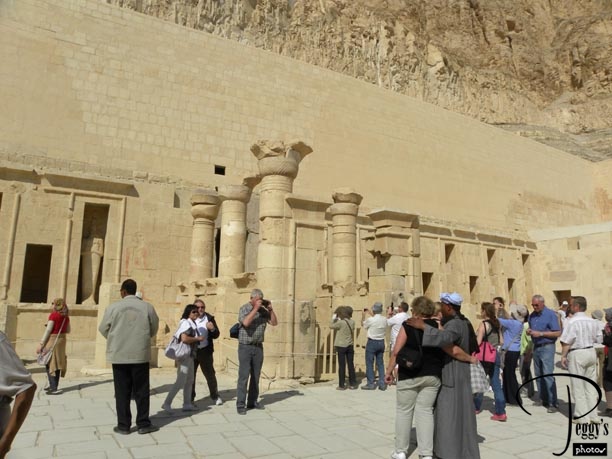
On the top level is the Djeser–Djeseru––the “Splendor of Splendors,” built into the cliff.

Temple of Queen Hatshepsut
Temple of Queen Hatshepsut
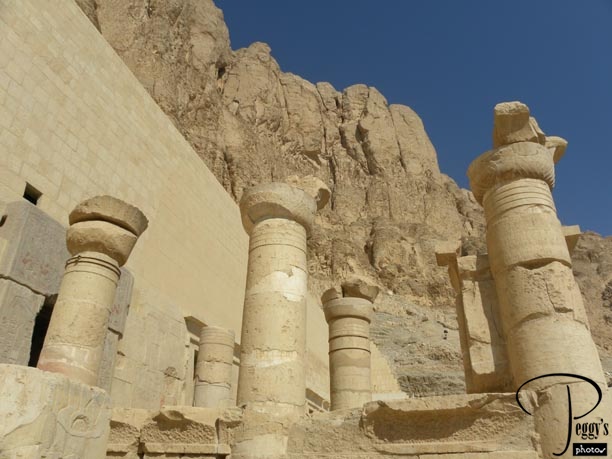
Closer–up of the columns.

Temple of Queen Hatshepsut
Temple of Queen Hatshepsut
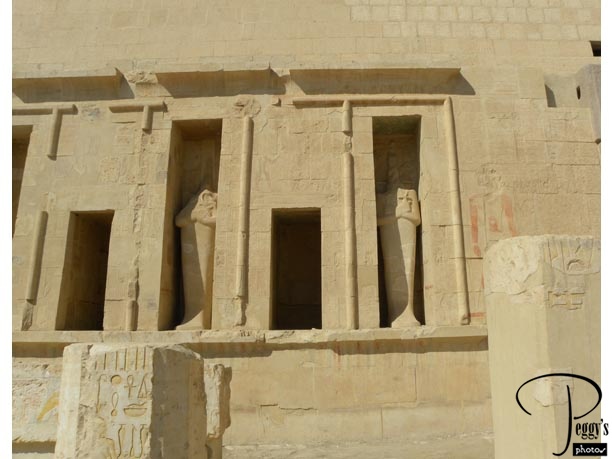
More statues.

Temple of Queen Hatshepsut
Temple of Queen Hatshepsut
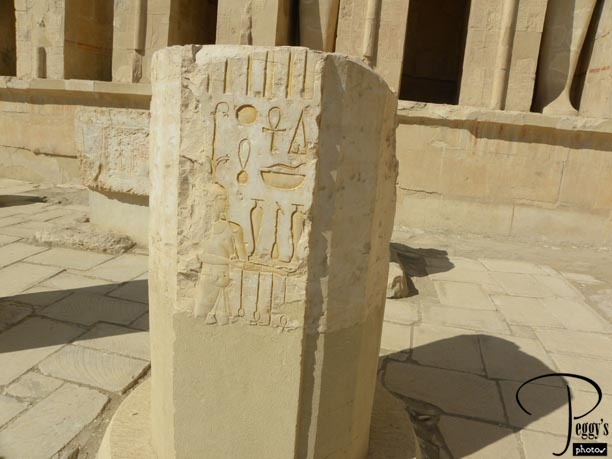
Hieroglyphics on a column.

Temple of Queen Hatshepsut
Temple of Queen Hatshepsut
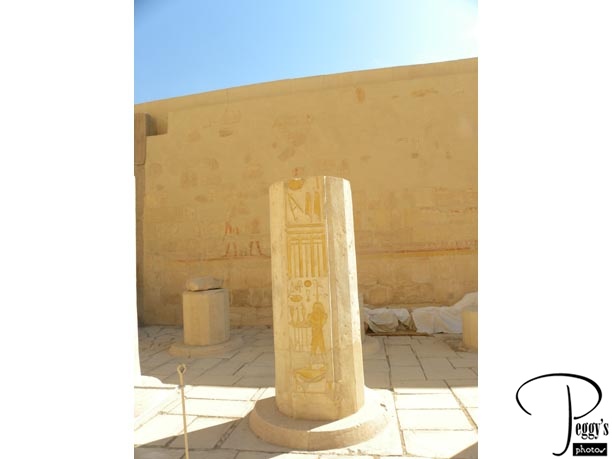
Part of a column.

Temple of Queen Hatshepsut
Temple of Queen Hatshepsut
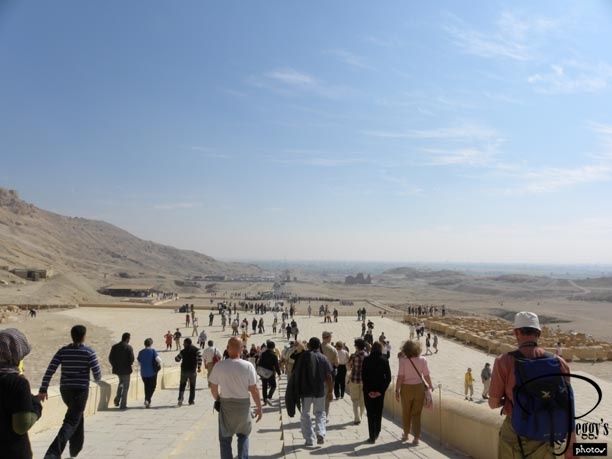
Leaving the temple.

Temple of Queen Hatshepsut
Temple of Queen Hatshepsut

The prototype for the Temple of Queen Hatshepsut: the older Temple of Montuhotep II, now in ruins.

Temple of Queen Hatshepsut
On the Road
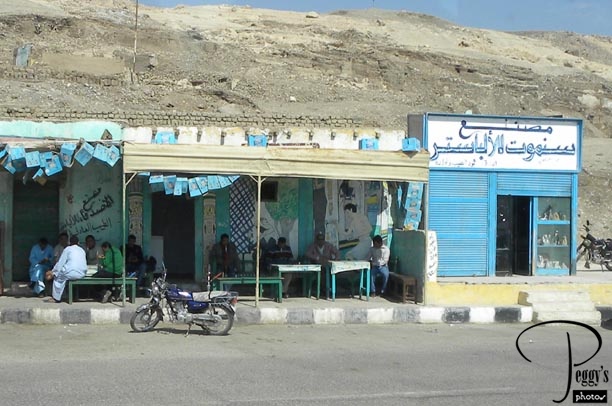
Cafe seen along the road in the Necropolis of Thebes.

On the Road
On the Road
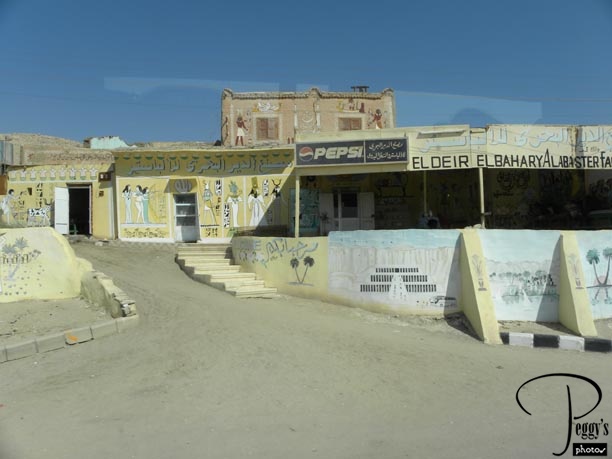
Another alabaster shop. Alabaster is found in Egypt only in two places, behind the Valley of the Kings being one of them. The use of alabaster in Egypt dates back to the Pharaonic period: 305–30 BC. There are two types of alabaster: gypsum, which is soft and is used for handmade products such as vases, and calcite or Oriental, which is used for machine–made items and also was used by the ancient Egyptians for sarcophaguses.

On the Road
On the Road
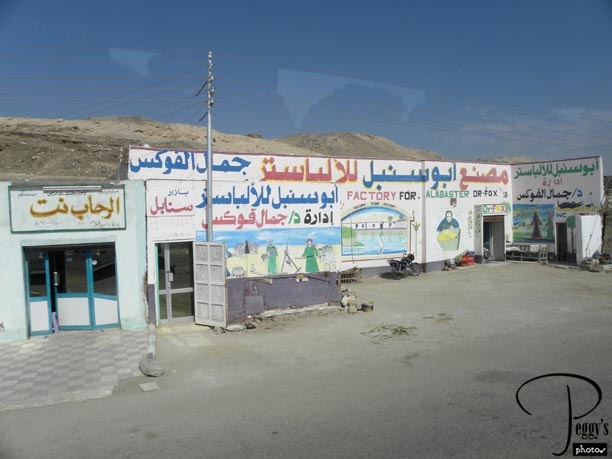
And another one.

On the Road
Hatcepsout for Alabaster Store
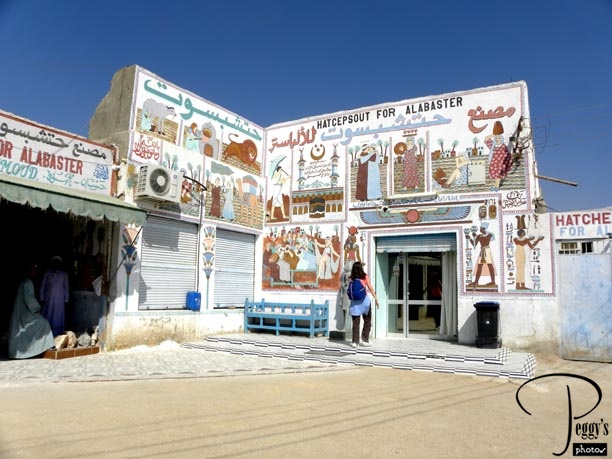
We stopped at this store of a demonstration of how alabaster is made into items and also as a shopping opportunity.

Hatcepsout for Alabaster Store
Hatcepsout for Alabaster Store
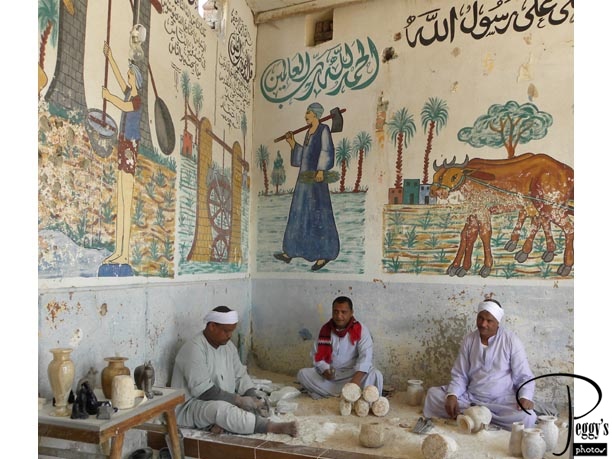
These workers demonstrated how alabaster is made into vases.

Hatcepsout for Alabaster Store
Hatcepsout for Alabaster Store
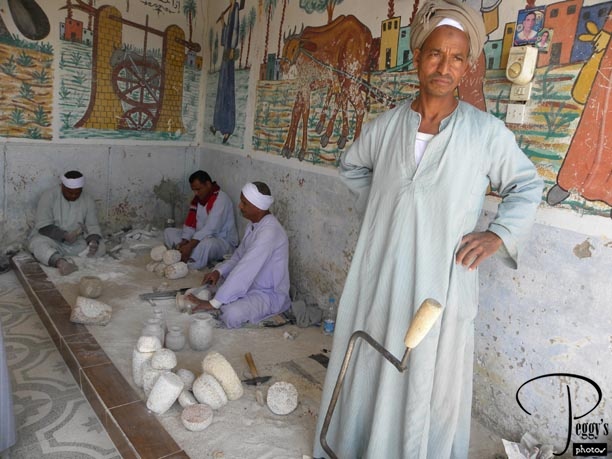
This worker was waiting to demonstrate the drilling process.

Hatcepsout for Alabaster Store
Hatcepsout for Alabaster Store
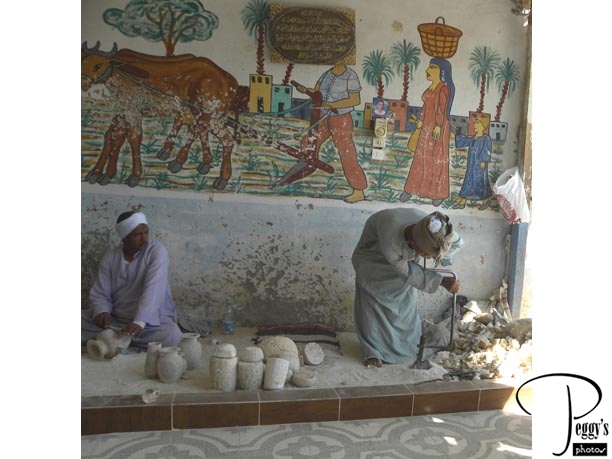
Here he is drilling the alabaster.

Hatcepsout for Alabaster Store
Hatcepsout for Alabaster Store
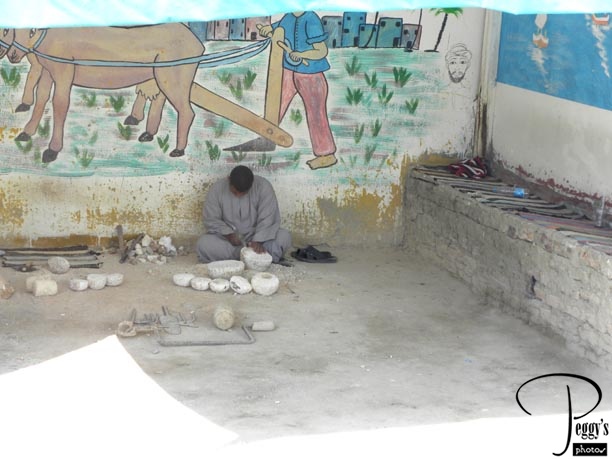
This worker is demonstrating molding the alabaster by hand. The gypsum alabaster is soft enough to do this.

Hatcepsout for Alabaster Store
Hatcepsout for Alabaster Store
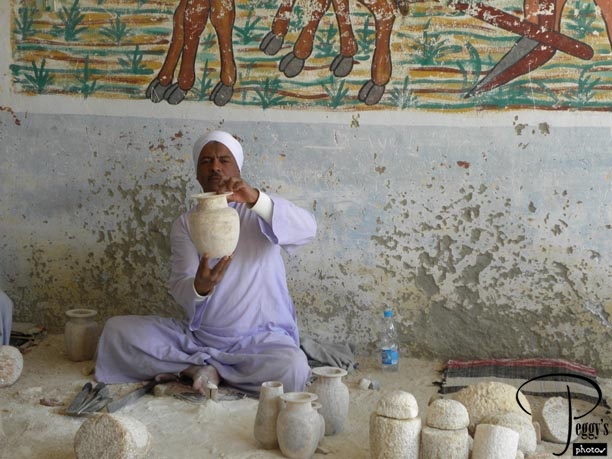
A finished vase.

Hatcepsout for Alabaster Store
Hatcepsout for Alabaster Store
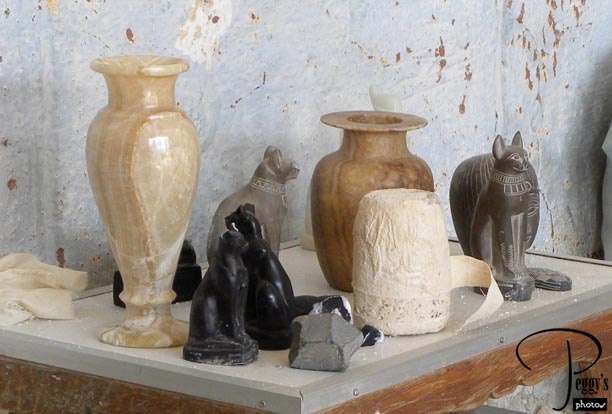
More finished items. Alabaster comes in different colors.

Hatcepsout for Alabaster Store
Hatcepsout for Alabaster Store
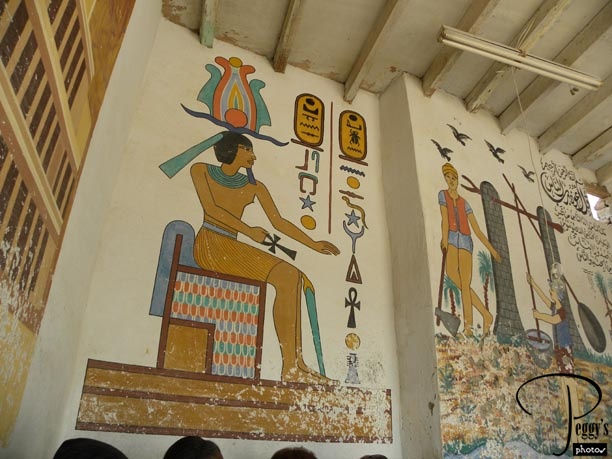
Close–up of one of the wall paintings in the work area.

Hatcepsout for Alabaster Store
Hatcepsout for Alabaster Store
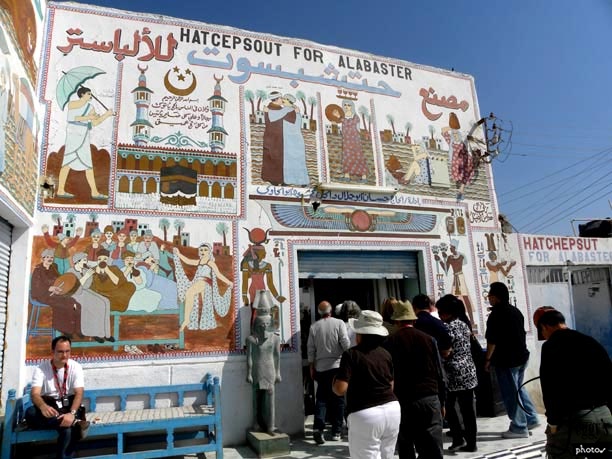
Our group entering the store.

Hatcepsout for Alabaster Store
Hatcepsout for Alabaster Store
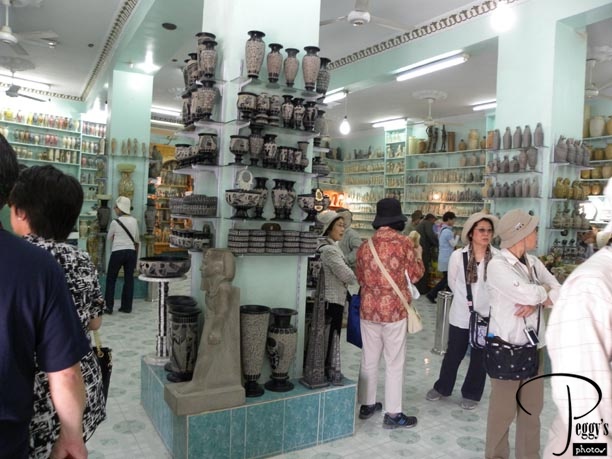
Inside the store. The vases were quite nice but also quite heavy, too heavy to put into a suitcase or to carry in a carry–on––at least for me. I did buy some small, much lighter weight items. I don’t think they were all made of alabaster as the store carried various items. I like shopping in foreign countries.

Hatcepsout for Alabaster Store
Hatcepsout for Alabaster Store
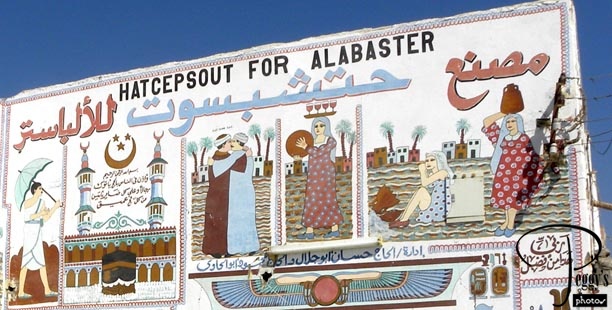
Close–up of the front of the store.

Hatcepsout for Alabaster Store
Hatcepsout for Alabaster Store
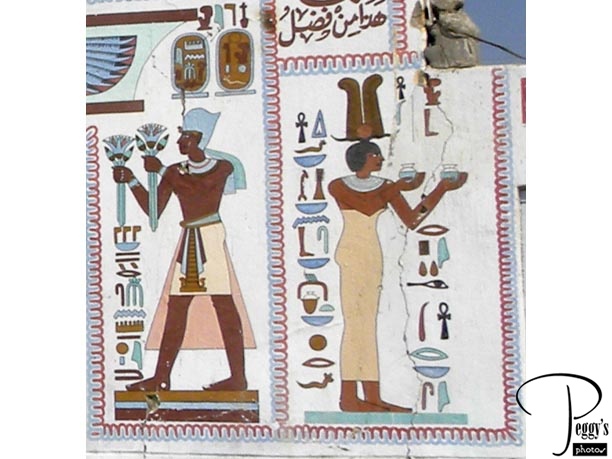
More of the front.

Hatcepsout for Alabaster Store
Hatcepsout for Alabaster Store
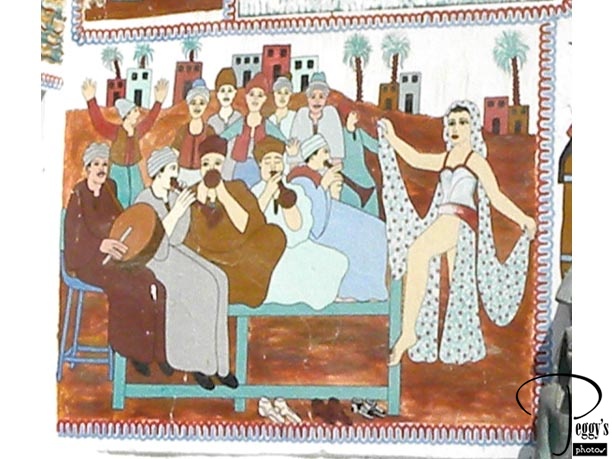
Another of the paintings.

Hatcepsout for Alabaster Store
Hatcepsout for Alabaster Store
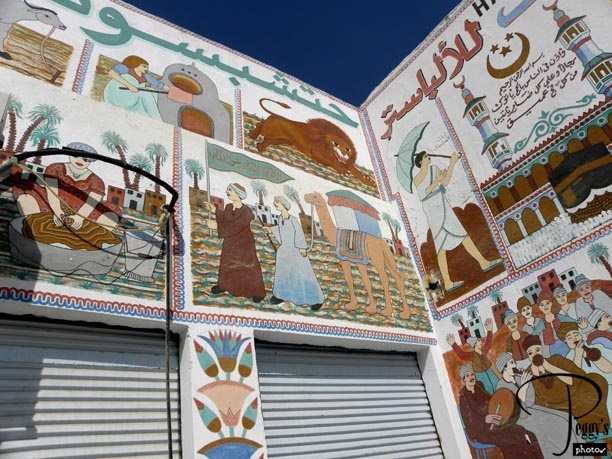
Paintings to the side.

Hatcepsout for Alabaster Store
A Village of Alabaster Stores
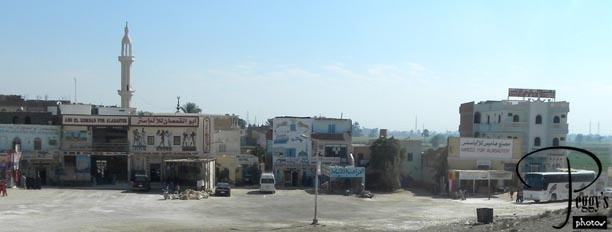
Alabaster stores lined up in a row.

A Village of Alabaster Stores
The Colossi of Memnon
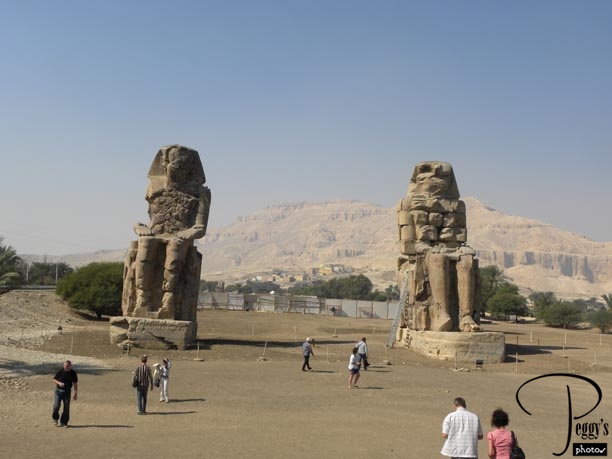
Our next stop: the Colossi of Memnon. Both of these statues actually are of Amenhotep III (1390–1352 BC, of the 18th Dynasty) and they guarded his mortuary temple which was later used for building material by later pharaohs. Floods destroyed the rest of the temple. Still an impressive sight.

The Colossi of Memnon
The Colossi of Memnon
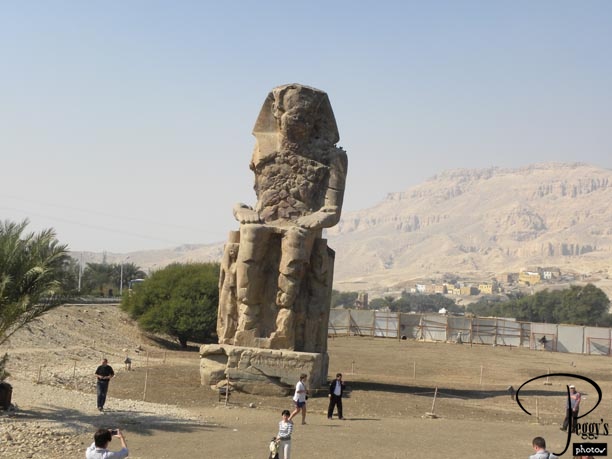
The statue on the left.

The Colossi of Memnon
The Colossi of Memnon
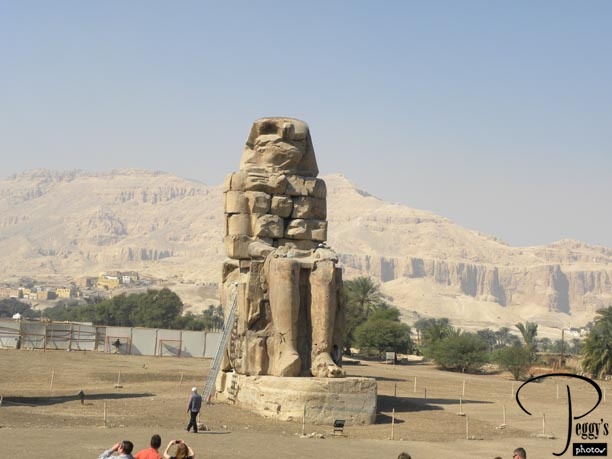
The statue on the right.

The Colossi of Memnon
On the Way Back to Luxor
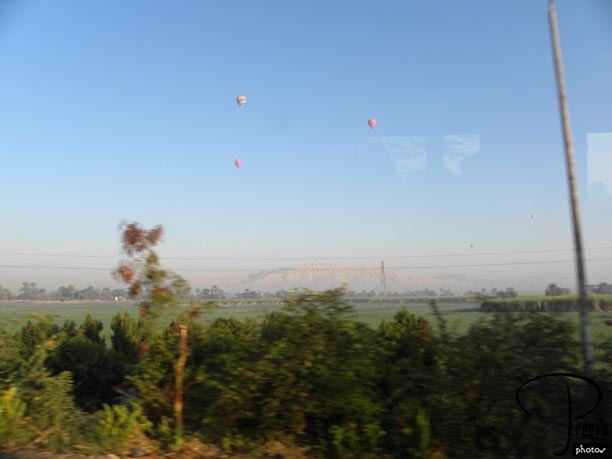
You can take a balloon ride over the Necropolis of Thebes. It was not part of our tour.

On the Way Back to Luxor
On the Way Back to Luxor
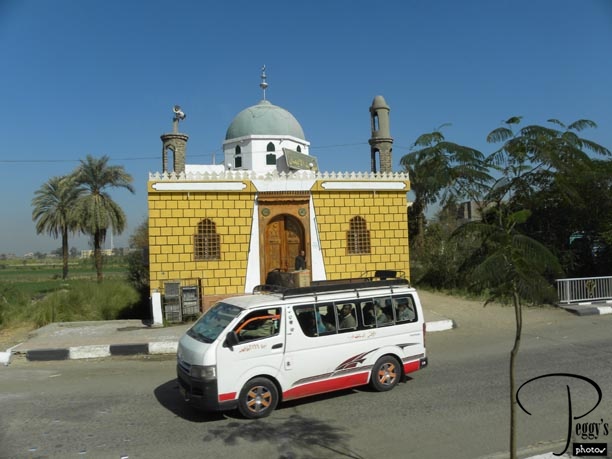
A mosque that we passed.

On the Way Back to Luxor
On the Way Back to Luxor
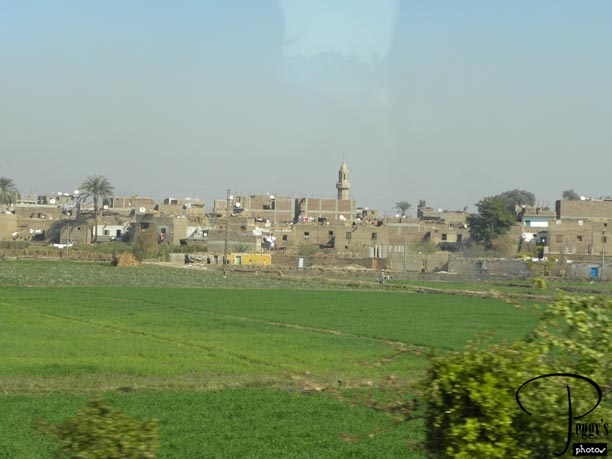
A town that we passed.

On the Way Back to Luxor
On the Way Back to Luxor
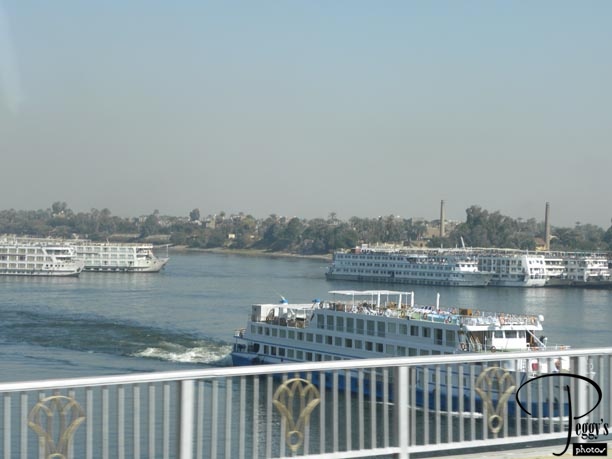
Crossing the Nile.

On the Way Back to Luxor
On the Way Back to Luxor
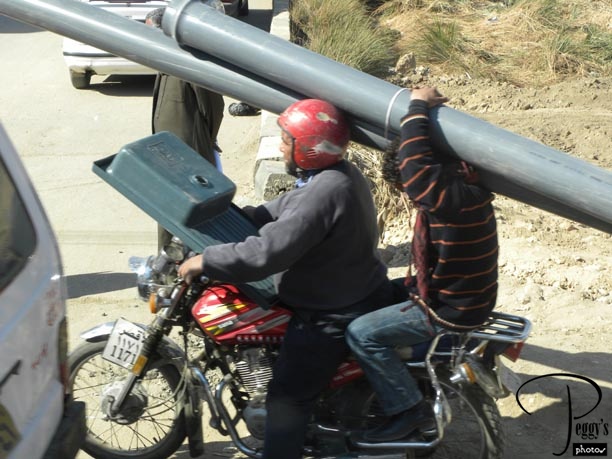
Inventive way to carry pipes.

On the Way Back to Luxor
On the Way Back to Luxor
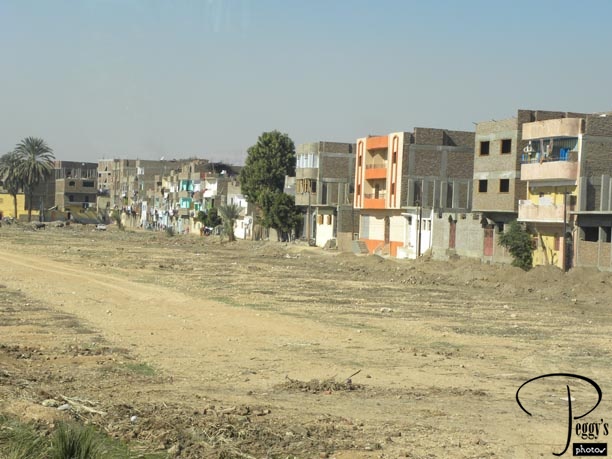
Another town that we passed.

On the Way Back to Luxor
On the Way Back to Luxor
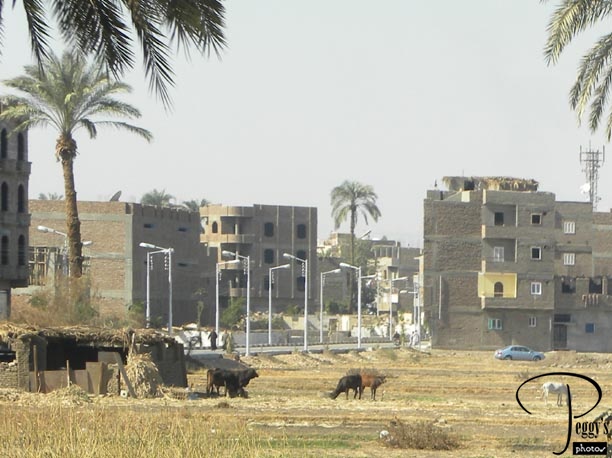
Another town we passed, this one with a farm.

On the Way Back to Luxor
Back in Luxor
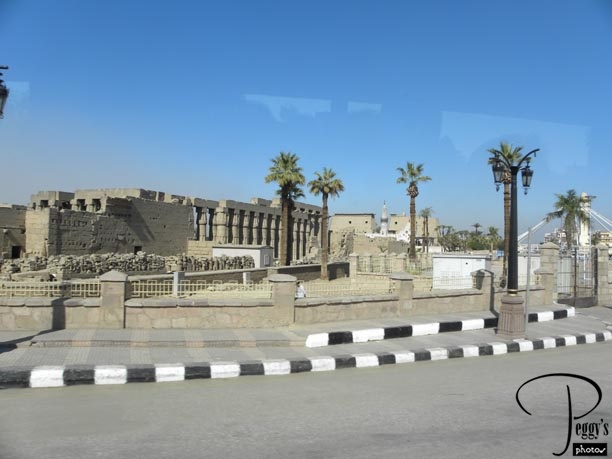
Passing the Luxor Temple. We went back to our ship for lunch.
